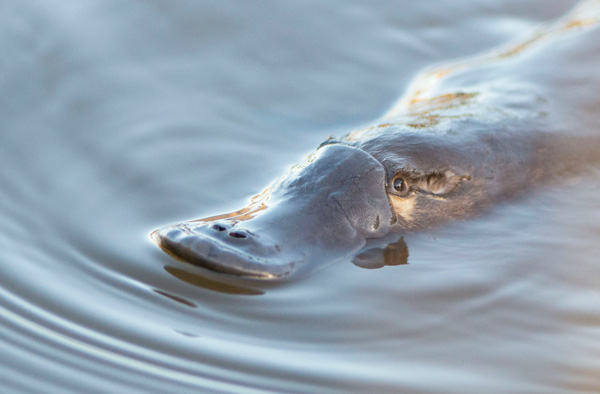By Geoff Williams, Australian Platypus Conservancy
A juvenile platypus typically emerges from its nesting burrow in mid-summer when it’s around 3-4 months old. They then face a steep learning curve if they are to survive, as their mothers will continue to provide milk for only a few weeks before they are left to fend for themselves. However, it’s also likely that most recently weaned juveniles will continue to share their mother’s home range until at least late autumn, when many choose to leave and search for a suitable home of their own. In the intervening period they continue to grow but also tend to lose condition, becoming skinnier as they compete with their mother, siblings and neighbours for food.
First-year juveniles are far more likely than older animals to be encountered by a human on dry land, either near a creek or river or in an unexpected setting such as a puddle by the side of a road. The person is then faced with having to decide what should be done to assist the animal’s survival. In some cases, a juvenile may be in genuine trouble and unable to survive without human intervention.
We know of cases when bright, healthy juveniles have been removed from the wild when they most likely were just goofing around near their nesting burrow and not really in any danger. In other cases – particularly in autumn or early winter – juveniles that are encountered far from the nearest water are most likely to be dispersing individuals that are engaged in normal (though inherently perilous) natural behaviour.
Deciding what to do with a displaced platypus will depend on the animal’s behaviour, physical condition (fat vs average weight vs thin), age and the circumstances in which it is found, along with any evidence of injury. If an animal is alert, active and otherwise in good shape, the best outcome is likely to be achieved by releasing it immediately in the nearest creek or river.
In other cases, the animal should be taken promptly to a veterinarian (ideally one with wildlife experience) for assessment and possible treatment.
To assist decision-making, Platypus Rescue Guidelines have been developed by the Australian Platypus Conservancy and are available at: https://platypus.asn.au/2022/03/01/platypus-rescue-guidelines/
PO Box 115, Campbells Creek VIC 3451
(03) 5416 1478 platypus.apc@westnet.com.au

